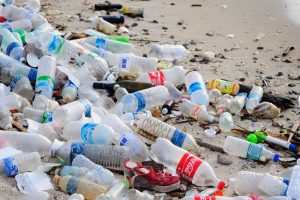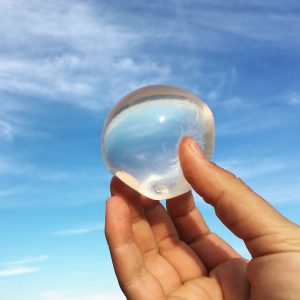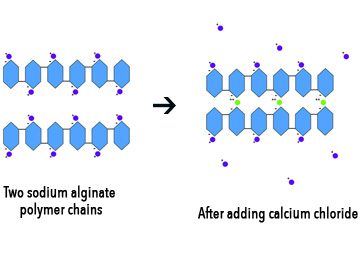
Photo Credit: Shutterstock
Every year, 8 million metric tons of plastic wastes flow into the ocean. One of the major plastic wastes is water bottle. For several decades, scientists have tried to find the replacement of plastic water bottle since plastic pollution emerged as global issue. We all know that the most common and easy way to reuse plastics is recycling. But, only 20% of total amount of used plastic water bottles is recycled because they should be treated in different processes depending on different types. What about rest of them? Most of them are burning and buried under ground and this occurs another harm damage to environment such as generating toxic chemicals.
Then, what is the Eco-friendly solution we have?

Photo Credit: Ooho! twitter
There is a revolutionary invention to replace plastic water bottles was introduced by Skipping Rocks Lab in 2013. Rodrigo Garcia Gonzalez and his team who create this edible water containers, called Ooho, were inspired by the strong amorphous membrane surrounding egg.
The idea is adopted one of the cooking technique which is spherification. The key point of making Ooho is making calcium alginate. When alginate acid reacts with sodium bicarbonate, sodium alginate polymer is formed. After putting calcium lactate, it reacts with alginate polymer chains as 1:2 ratio. Then, cross-linked polymer chains are formed. This is how the membrane is formed when the high molecular chain, which was initially flexible, becomes less flexible.

Image Credit: American Chemical Society
Ooho consists of outer membrane and inner membrane which is in the form of gel. The outer membrane is formed by the cross-linked sodium alginate polymer chain. Alginates is refined from sea weeds and it is the reason why edible water bottle can be biodegradable. The jelly-like inner membrane keeps water hygienically without adhesive.
Likewise, this material is totally safe to human after swallowing it. What if you do not want to eat? It is totally fine! This water bottle will be naturally degraded in 4 to 6 weeks.
According to the Ellen MacArthur Foundation, researchers predict that there will be more plastic in the ocean than fish and the amount of ocean plastic wastes will be 10 times greater by 2020. Now, we cannot put off the plastic pollution any longer. We must change the plastics that we use in daily life.
Still, this edible water bottle has considerable problem such that it cannot be resealed once it is opened. But, if this Eco-friendly water container is used instead of plastic water bottle, it will be the big step for our environment to be freed from plastics.
Written by Anna Kwon
